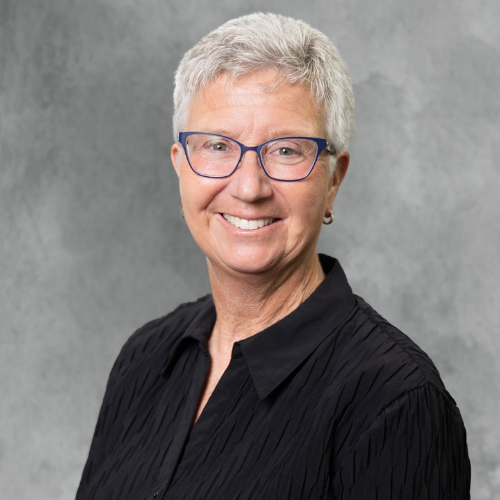Cutting-edge Orthopedic Treatments Available at Axis Spine and Orthopedic Surgeons St Louis MO
Advanced Spinal Column and Orthopedic Surgery for a Pain-Free Life
The landscape of spine and orthopedic surgery has actually evolved substantially, offering a range of sophisticated methods designed to minimize chronic discomfort and enhance person outcomes. Advancements such as robotic-assisted treatments and minimally invasive approaches are redefining surgical criteria, while regenerative medication introduces brand-new methods for healing. These growths not just guarantee minimized recuperation times but additionally provide customized rehab techniques that cater to specific requirements. As we explore these transformative methods, it becomes necessary to understand their effects and the real-life experiences that emphasize their effectiveness. What might these innovations imply for the future of pain monitoring?
Comprehending Chronic Discomfort
Exactly how does persistent discomfort vary from severe discomfort, and what implications does this difference have for therapy? In contrast, chronic discomfort continues beyond the predicted duration of recovery, commonly lasting for months or even years.
The implications for therapy are substantial. Sharp pain monitoring frequently concentrates on attending to the immediate reason through medicines, physical treatment, or surgical interventions. Conversely, chronic discomfort calls for a multifaceted approach, as it may not reply to standard therapies. Reliable management commonly includes a mix of medicinal treatments, emotional assistance, and lifestyle adjustments. Additionally, recognizing the psychological and emotional elements of persistent pain is necessary, as these elements can exacerbate the experience of discomfort. A detailed therapy method tailored to the individual is important for enhancing the top quality of life for those experiencing from persistent pain (Axis Spine and Orthopedic Surgeons St Louis MO).
Cutting-edge Surgical Strategies
The monitoring of chronic pain frequently brings about the expedition of cutting-edge medical strategies that can provide relief when conventional treatments fail. Advancements in technology and medical approaches have actually considerably changed the landscape of spinal column and orthopedic surgery, enabling specialists to resolve complex conditions better.
One such strategy is robotic-assisted surgery, which improves precision and minimizes the risk of problems. Furthermore, endoscopic back surgery has arised as a useful alternative for treating herniated discs and spine constriction.
An additional ingenious technique is the usage of 3D printing in developing tailored implants and surgical overviews, customized to individual client makeup. Collectively, these strategies stand for a standard shift in just how chronic discomfort is handled, providing brand-new hope for those seeking enduring alleviation.
Advantages of Minimally Invasive Surgical Treatment
Decreasing injury to the body is an essential advantage of minimally invasive surgery, which has transformed the field of back and orthopedic procedures. This method utilizes smaller sized cuts compared to conventional surgical treatment, resulting in reduced muscle mass and cells damages. Because of this, individuals experience much less discomfort post-operation, which can significantly improve their overall convenience during recovery.
One more vital advantage is the decrease in blood loss and lower threat of infection. Smaller lacerations decrease the exposure of internal structures, thereby lowering the chance of issues. Additionally, the precision of minimally invasive strategies usually equates to shorter medical times, which can better reduce the dangers connected with longer treatments.
Clients can also anticipate a quicker return to everyday tasks and, in a lot of cases, a shorter hospital keep. This expedited recuperation process not only enhances patient contentment yet can additionally result in lower medical care expenses. In general, the benefits of minimally invasive surgical procedure prolong past immediate surgical results, advertising a quicker, more secure, and a lot more effective path to restoring flexibility and top quality of life for individuals experiencing from back and orthopedic problems.
Recovery and Healing Approaches

Early mobilization is crucial, as it promotes circulation and protects against complications such as deep blood vessel thrombosis. Gradually raising activity degrees, under expert assistance, aids in recovering strength and versatility. Individuals are urged to take part in gentle range-of-motion workouts right after surgical procedure, advancing to even more demanding exercises as healing enables.
Discomfort management is essential to recovery, with an emphasis on implementing multimodal approaches that may include medicines, physical therapy, and alternate therapies such as acupuncture. Education and learning on body mechanics and ergonomics is important for avoiding re-injury, ensuring that clients recognize how to relocate securely throughout their healing.
Regular follow-up visits are necessary to check development and make adjustments to rehabilitation procedures. Inevitably, an interdisciplinary method that combines medical proficiency, patient education and learning, and encouraging care promotes a smoother shift back to everyday tasks and enhances lasting outcomes in back and orthopedic surgical treatment.

Real-Life Success Stories
Real-life success stories in back and orthopedic surgery highlight the transformative influence of efficient rehabilitation and individualized care. Think about the situation of a 52-year-old individual struggling with chronic reduced neck and back pain as a result of a herniated disc. After a thorough analysis, a minimally intrusive discectomy was executed. Post-surgery, the client took part in a tailored recovery their explanation program, which consisted of physical treatment and progressive enhancing exercises. Within months, they reclaimed complete movement and went back to their active way of living, without discomfort.
The surgical restoration was complied with by a thoroughly checked recuperation regimen. The athlete dedicated to extensive physical therapy, concentrating on toughness and security to sustain a successful comeback.
These narratives emphasize the value of personalized treatment plans and the dedication of both clients and doctor. Each story offers as a testament to the improvements in back and orthopedic treatment, highlighting that with the appropriate technique, a pain-free life is indeed attainable.
Final Thought
To conclude, progressed spine and orthopedic surgical procedure stands for a considerable development in the pursuit of a pain-free life. Cutting-edge surgical techniques, minimally invasive and especially robotic-assisted procedures, greatly improve accuracy and minimize recovery times - Axis Spine and Orthopedic Surgeons St Louis MO. Paired with regenerative medication and personalized rehab programs, these methods promote reliable recovery and repair of movement. The compelling success tales of people underscore the transformative impact of these modern medical interventions, offering expect better lifestyle in individuals experiencing from chronic pain.
